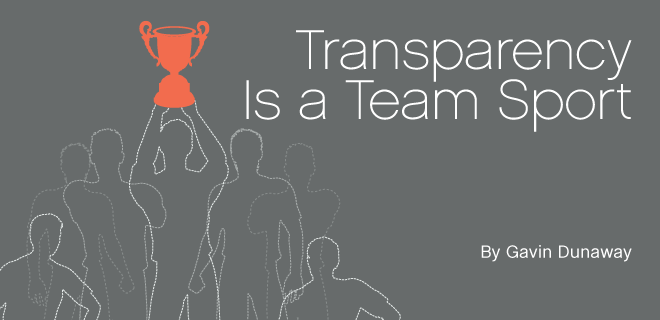
For years, we’ve joked that brands don’t care how the digital advertising sausage is made. Their modus operandi seemed along the lines of: Let the agencies and publishers deal with the frustrating minutiae involved in making digital media transactions work.
Funny how quickly things change. As increased spend hits digital channels and the people holding the purse strings don’t feel they’re getting their money’s worth, brands have upped their interest in the mysterious workings of digital advertising.
Yes, they seek the grail! I mean… transparency!
The biggest sign of movement is the now infamous, gauntlet-laying IAB Annual Leadership Meeting speech by P&G’s Marc Pritchard. In a nuanced talk where he admitted brands don’t have the greatest understanding about how digital media executions work, Pritchard set a rigid list of demands mainly aimed at media agencies, including disclosure of rebates and all transactions made auditable. Finally, Pritchard contended that any company in touch P&G dollars needed to be accredited by the Trustworthy Accountability Group (TAG).
Then last month, brand safety became the topic du jour again after a long period of flying under the radar. A few advertisers and agencies made a big show of ditching Google’s advertising platforms—including the Google Display Network and YouTube—after their creative appeared on extremist sites and other content.
While no one else pulled their spend, advertiser outcry was loud enough that Google offered public apologies and promised enhanced buyer controls. This renewed interest in brand safety comes at the strange intersection of heightened public awareness (including worried advertisers) of extremist publications and hate content on the Internet, and brands becoming more insistent about where they want their ads to appear.
Taken alongside increased brand efforts to become programmatic media buyers, it’s clear advertisers want a lot more control in the digital space. After several high-profile measurement snafus, advertisers have also managed to force Google and Facebook to crack open their walled gardens to let third-party measurement crews in.
Believe it or not, premium publishers, brands caring about how the sausage is made is quite good news for you: the days of blindly chasing cookies all over the web have ended, and the so-called race to the bottom in programmatic has been canceled! Though in his speech Pritchard lamented the “crappy media supply chain,” the opportunities are there to show that your sites are not part of it.
You see, advertisers have grown to love the power of buying programmatically, and why wouldn’t they? They can target their highly valuable first-party data or even do ID-syncing with publishers. The desire for transparency and brand safety will push them even further into private marketplaces with premium publishers they believe they can trust.
Oooh—that’s the rub, isn’t it? How do your prove you’re trustworthy in the age of obfuscation? Well, first be forthright about viewability and invalid traffic figures with your partners. Also, avoid buying traffic if you can; if you must, make sure you are monitoring the amount of bot traffic coming in from each partner. Then work on removing as many intermediary bumps as possible between you and your advertiser partners to try ward away arbitrage. Oh, yeah—make sure you’ve got a malware scanner keeping the bad ads out.
But even with all that, you should be looking into registering with TAG. (You might remember when we wrote about their malware prevention guidelines a little while ago.) This joint effort of the IAB, ANA and 4A’s offers certifications against fraud, malware, and piracy in order to create a registry of digital advertising players yearning for transparency. Basically, it’s creating an easy way for advertisers to determine who is serious about playing clean.
I know some of you are thinking, “Aw man—one more certification I have to get?” Well, if the world’s biggest advertiser—that would be P&G—is pushing for certification of its whole supply chain, you can bet others will follow suit.
Sovrn CEO Walter Knapp suggests in a blog post that this movement has momentum: “Any responsible supply-side participant that drags their feet or ignores these industry requirements is doing nothing more than leaching from the common asset of consumer trust. Any marketer or advertiser that doesn’t vote with their wallets is just feeding the problem. This is within our control to solve, so let’s get on with it already.”
Oh, and pubs should be using the registry as well to check on their ad tech partners. Because transparency isn’t just about the pub—it’s a group effort. TAG potentially offers an opportunity to pre-validate partners before you begin working with them. (This does not, however, replace the vendor certification process for your pub. TAG certification would be more like a handy addendum.)
With brands demanding transparency throughout the supply chain, publishers will have to be pickier about their providers, especially when advertisers insist on direct relationships between DSPs/SSPs straight to pubs rather than through a network or other intermediary.
Trust is at an all-time low in digital advertising; it’s kinda fortuitous that brands are diving in now with serious transparency demands… Because someone needed to, and an initiative was only going to be effective coming from the top.
And even though it may seem like the dreaded Duopoly is towering over ad spend, their lack of transparency is a huge structural weakness, especially as inventory quality becomes important than quantity.